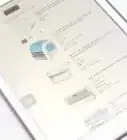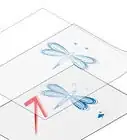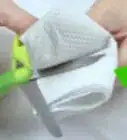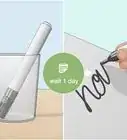wikiHow is a “wiki,” similar to Wikipedia, which means that many of our articles are co-written by multiple authors. To create this article, 18 people, some anonymous, worked to edit and improve it over time.
There are 7 references cited in this article, which can be found at the bottom of the page.
The wikiHow Video Team also followed the article's instructions and verified that they work.
This article has been viewed 210,519 times.
Learn more...
Have you ever needed a file folder and either can't find one? Or are you just tired of staring at the boring colors of your old file folders? Whether you want to make your own or just simply add to the folders you already use, here are a few ways to make your file folders have more personality and originality.
Steps
Creating a Homemade File Folder
-
1Buy your materials. There are many different types of materials you can use to make your folder. You can use paper, paper stock, cardstock, or cardboard. You can find many different patterns and designs of these materials in craft and hobby stores. Most documents stored in file folders are 8 1/2 by 11 inches, so make sure you buy pieces that are at least two inches larger on each side.
- If you can find materials that are larger than 18 inches (45.7 cm) by 12 inches, you only have to buy one sheet per folder. You will be able to fold it in half. If the paper you find is less than 18 inches (45.7 cm), you will need to buy two pieces per folder.
- Paper isn't the most durable material, so if you are going to be using your file folders a lot, you might want to use the more durable materials like cardstock or cardboard.
- If you are making the folders for work, think about what type of pattern or look would be most appropriate for the office. If they are just going to be in your desk at home, the type of pattern or design doesn't matter as much.[1]
- Making your own file folder is a great way to save money, have a little fun, and show your creative side, so feel free to be as creative and crazy as you want to be.
-
2Measure and cut your materials. Once you've bought the materials you want to use, measure your materials. Cut one rectangle that is 10 by 12 inches and one that is 9 by 12 inches. If you have one sheet of paper, you need to cut it to 18 1/2 by 12 inches.
- If you want slightly sturdier edges, expand the width of each rectangle from 12 inches (30.5 cm) to 13 inches. This extra inch will make folded edges on each side of the folder.[2]
- If you want your folder to be the exact shape and size of a traditional file folder, trace the shape of a file folder on the underside of the material you are using, matching up the smaller file folder side to the smaller rectangle and the larger folder side to the larger rectangle. Cut around the shape you made to create your two pieces.[3]
Advertisement -
3Fold and glue the pieces. Measure and mark a 1⁄2 inch (1.3 cm) strip on the bottom of the 12 inch (30.5 cm) side of the smaller rectangle. Fold the paper or stock along the line you just drew. Using a glue stick, double-sided tape, or super glue, place the adhesive along the outside flap of the 1⁄2 inch (1.3 cm) fold. Take the larger rectangle and line up the bottom of it with the 1⁄2 inch (1.3 cm) fold, adhering the glue to the bottom of the larger rectangle. The edges of the two rectangles should be the same size.[4]
- If you are using sturdier material than paper, you might want to score along the 1⁄2 inch (1.3 cm) mark so your material doesn't crack when you fold it. To score the material, place your ruler along the line you just drew. Using a hard object such as a letter opener, gently press along the line you drew, leaving an indention along the line. This will make it easier to fold and your material will not buckle or crack.[5]
- For sturdier edges, you need to glue the sides before you glue the bottom. Make a 1⁄2 inch (1.3 cm) mark on each of the short edges on both rectangles you cut, folding them along the mark. Put glue on the inside flap of each and fold the edges in. This creates a sturdier outside edge for your folder.[6]
-
4Finish the folder. Once the glue has dried, you can fold the folder closed. There should be about an inch of the larger rectangle showing underneath the smaller rectangle. You can leave the edge at the top the way it is, with the uniform tab across the entire folder, or you can cut the back edge to look like a traditional file folder. To do this, pick where you want the tab, marking out the place you want to tab to be. Cut along the top of the folder, evening out the folder flaps in all the areas except where your designated tab is. Then you can add a label to your folder, add some files, and you're folder is done.
- The tabs on traditional file folders vary in placement and can be on the right side, left side, or the center. If you are making multiple, you might want to make some of each so you can stagger where the tabs are.
- If you picked a stronger cardstock that didn't come in the pattern you wanted, you can always add patterned paper on the front of the file folder to add more flare to the folder. To do this, once your folder is created, cut the pattered paper about a half inch smaller than the size of your folder on all sides. Glue the paper to the outside of the folder, centering the paper in the middle of the folder. The color of the cardstock folder will show along the edges and the pattern will make your folder pop.[7]
Decorating a Traditional File Folder
-
1Pick your materials. You need to have the file folders you want to decorate as well as the materials you want to use to decorate them. You need materials large enough to cover the outside of one or both sides of the folder such as wrapping paper, decorative paper, contact paper, or fabric. You can also buy small cut outs, stickers, colorful tape, or other decorative elements that you'd like to add to the outside of your folder to add something extra.[8]
-
2Choose your style. There are many different ways you can decorate your file folder. You need to decide where you want to add which elements to your folders. You can cut your materials to cover the inside, where the pop of color is on the larger side of the folder with the tab. You can cover the front of your folder, with a large area of design showing on the outside. You can also cover the entire thing front and back, making it look like a completely different folder than the one you started with. [9]
- If you are decorating the folders at work, you might want to think about what type of pattern or look would be most appropriate for the office. If your folders are just going to be in your desk at home, the type of pattern or design doesn't matter as much as long as you like it.[10]
-
3Cut out materials. No matter what material you choose, you are going to have to cut down the material to fit the file folder. Roll or lay out your material design side down on the table. Place your file folder on top of it. Trace the outside of the file folder onto the material. Once you've drawn the whole area you are going to cover, cut around the outline you made.[11]
- If you don't feel confident in your cutting skills, try the next step, gluing your material to your file folder, first and then cut around the edge of the folder. This will give you a more firm area to cut around and will ensure that it is precise.[12]
- If you are adding your paper to the inside of the file folder, you don't have to make the entire shape of the file folder if you don't want to waste the material. Just cut around the visible edge and cut off the bottom once it is no longer visible from the outside.[13]
-
4Glue the materials. You need to use a glue stick, super glue, or other thin adhesive so the material won't stick up from the file folder. Focusing on the area you want to cover on the file folder, gently apply a thin, generous coat of glue to the surface of the file folder. Before the glue has time to dry, adhere your material to the folder, making sure to line up the edges. Gently press down on the surface of the material, making sure each area sticks to the file folder underneath.[14]
- You may want to run a ruler flat across the surface of the material to get out any air bubbles that might have gathered when you attached the material.
- If you use fabric to cover your folders, make sure you use a type of adhesive that won't bleed through the fabric and that will hold the fabric onto the folder, such as a spray adhesive, instead of super glue.
- If you decided to use contact paper, you just need to pull off the sheet covering the adhesive side after you cut the paper and attach it to the file folder. Contact paper is also great for covering the entire folder, so try covering the whole folder in the contact paper of your choice. Not only does this give your folder a new look, it also makes it more durable and waterproof.
-
5Add decorative elements. Once the glue has dried on your file folder, add your decorative elements. There is no one way to add decorations to your folders, so just have fun and make them as festive as the situation allows.
- You can add stickers or decorative tape to the front of the folder. Try crisscrossing tape to make designs or using the tape as the backing to your labels.
- You can glue cut outs along the folder to add more designs to your material. You can also add objects such as buttons or bows to the cover to add extra flare.[15]
- You can also use ink pads and stamps to cover areas with more decorative and personal touches. This adds decoration without adding additional bulk or elements that might fall off with extended use.[16]
Community Q&A
-
QuestionHow I can make a file cover that's simple and attractive for home science?
 Community AnswerWhat you can do is get some felts and just draw patterns. Sometimes folders at shops are made to look hand-made, it's cute and easy.
Community AnswerWhat you can do is get some felts and just draw patterns. Sometimes folders at shops are made to look hand-made, it's cute and easy. -
QuestionWhat can we use if we don't have paper?
 Community AnswerYou can use cardboard or card stock.
Community AnswerYou can use cardboard or card stock. -
QuestionCan I use hand made paper to create a file folder?
 Community AnswerYes. Just fold it into half, punch two holes on the folded side and tie a tag to it.
Community AnswerYes. Just fold it into half, punch two holes on the folded side and tie a tag to it.
References
- ↑ https://www.youtube.com/watch?v=CWWqKXcaEMI
- ↑ https://www.youtube.com/watch?v=CWWqKXcaEMI
- ↑ https://www.archives.gov/preservation/storage/folder-requirements.html
- ↑ https://www.youtube.com/watch?v=CWWqKXcaEMI
- ↑ https://www.youtube.com/watch?v=B_C8lG2gXjw
- ↑ https://www.youtube.com/watch?v=CWWqKXcaEMI
- ↑ https://www.youtube.com/watch?v=CWWqKXcaEMI
- ↑ http://www.livecrafteat.com/craft/decorative-file-folders-how-to-line-a-file-folder/
- ↑ http://www.livecrafteat.com/craft/decorative-file-folders-how-to-line-a-file-folder/
- ↑ https://www.youtube.com/watch?v=CWWqKXcaEMI
- ↑ http://www.livecrafteat.com/craft/decorative-file-folders-how-to-line-a-file-folder/
- ↑ https://www.thinkmakeshareblog.com/decorative-file-folders/
- ↑ http://www.livecrafteat.com/craft/decorative-file-folders-how-to-line-a-file-folder/
- ↑ https://thecrazyorganizedblog.com/diy-file-folders/
- ↑ http://www.theorganizedclassroomblog.com/index.php/blog/easy-diy-file-folders
- ↑ https://thecrazyorganizedblog.com/diy-file-folders/
About This Article
To make a file folder, start by cutting two rectangles out of cardboard or paper, one measuring 10 by 12 inches and another measuring 9 by 12 inches. Next, measure a 1/2 inch strip along the bottom 12-inch side of the smaller rectangle and fold it over. Then, apply glue to the outside edge of the fold and stick it along the bottom edge of the larger rectangle. Once the glue has dried, fold your file closed, put a label on the tab at the top, and give your folder a name so you know what's in it. For tips on how to give your folder stronger edges or how to decorate it, read on!
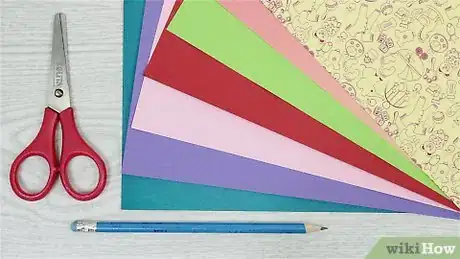
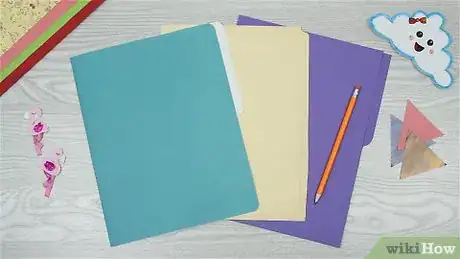
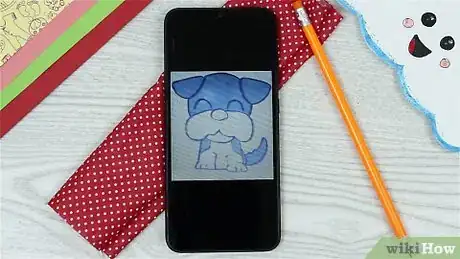

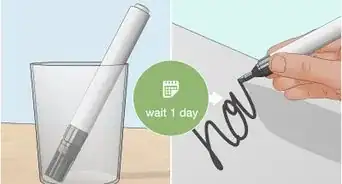

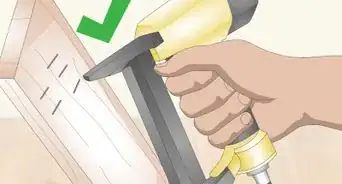
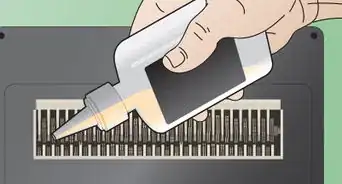


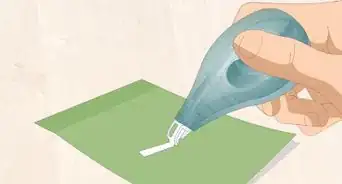
-Step-22.webp)








